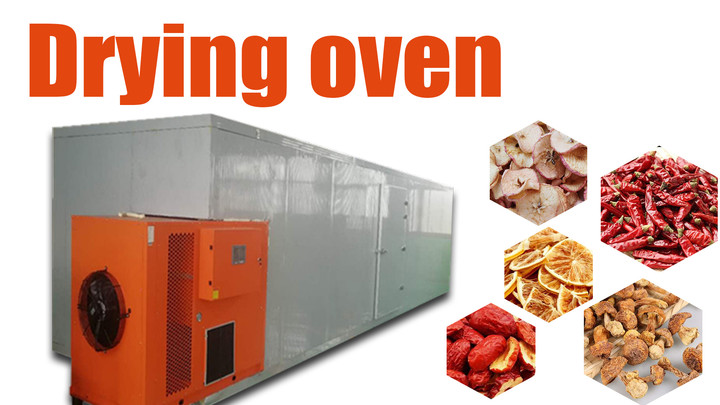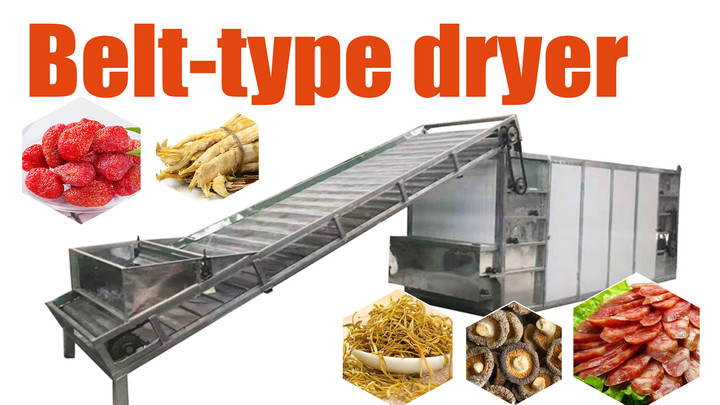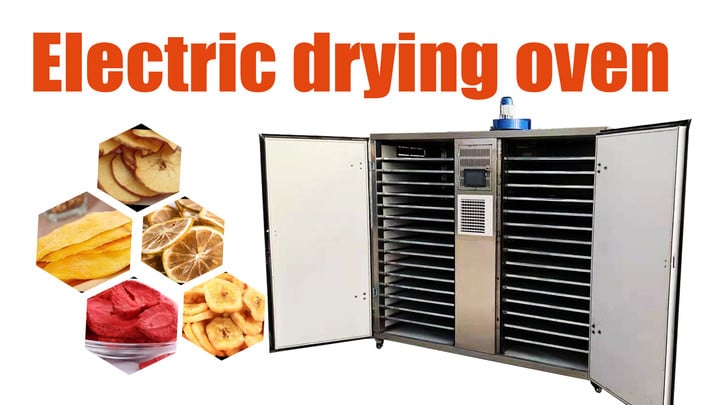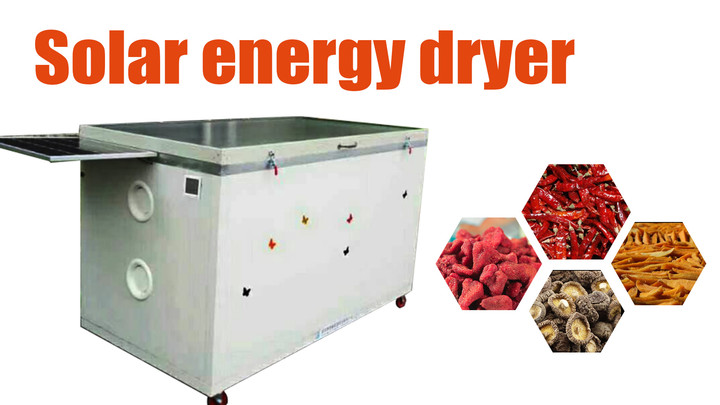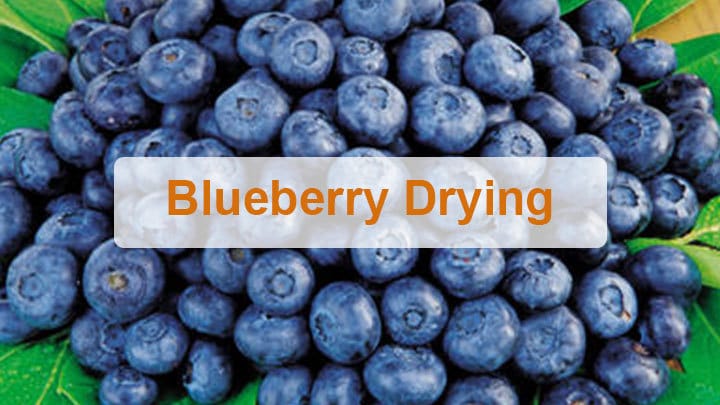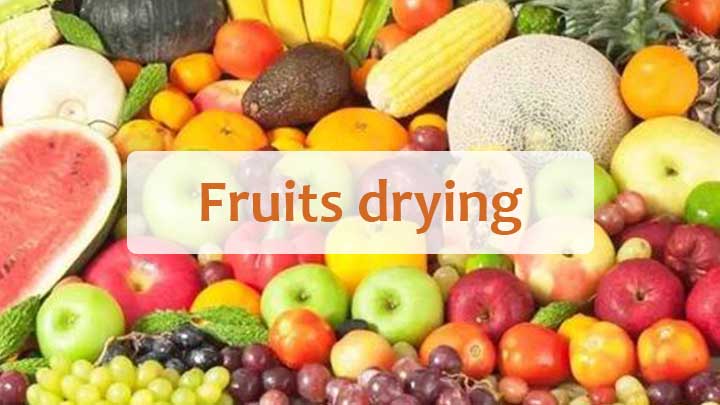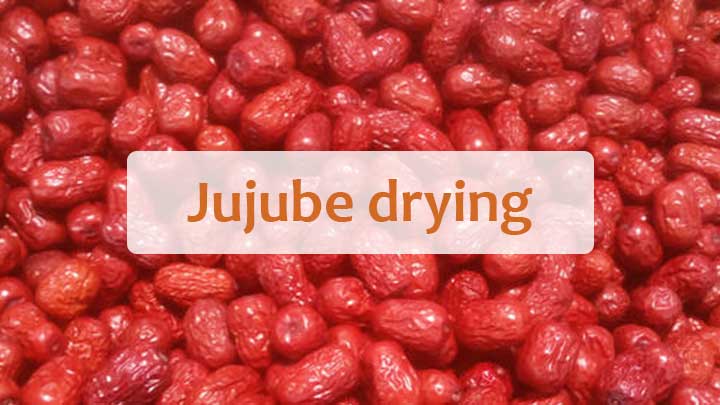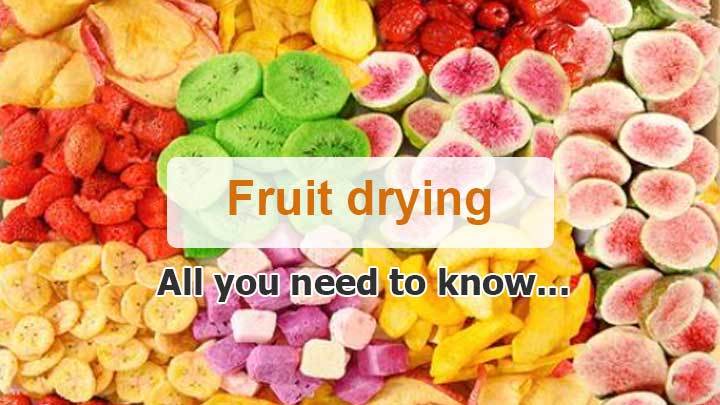
我们经常在超市、水果店看到各种干果。干果可以保持新鲜水果的口味和营养,并且更方便储存和携带。那么我们如何制作干果呢?下面我就给大家介绍一些水果烘干的方法。
工厂和家庭的不同烘干机
对于大型水果加工厂或水果超市,我们建议您使用水果烘干房或连续输送式烘干机,两者均采用热风循环烘干。水果烘干房的产量可根据您的需求定制。连续输送式干燥机可实现连续进料、连续出料,可满足大生产的需要。
大多数水果在干燥前都需要进行一些处理。如果您需要实现大规模自动化、连续化生产,我们可以为您提供配套的相应机器。以烘干苹果为例,我们有水果清洗机、水果去核机、水果切片机、水果烘干机、干果包装机。一站式水果加工解决方案提供商,欢迎联系。
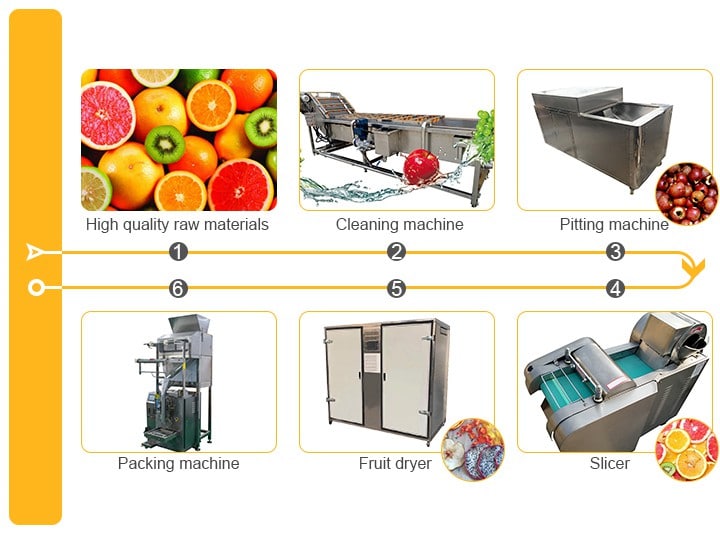
对于家庭和小型水果店来说,我们一般都会使用小型电烘干炉来烘干水果。小型水果烘干箱占地面积小,可以轻松放置在家里或商店里。而且用户用电烘干更加方便,热源可以配备我们的空气能热泵,只需要很少的电就可以烘干一整箱水果。对于一些缺电的地区,我们也有相应的太阳能烘干机。市场上常见的水果都可以用这款水果烘干机进行烘干。烘干效果当然也很好。干果可以作为外出旅行时的干粮储备,也可以作为闲暇时的休闲零食。
水果烘干的注意事项
Material characteristics: For different materials, choosing a suitable drying method is very important.
例如,对于蓝莓、樱桃和其他小浆果的干燥,需要一些特殊的干燥工艺。烘干这类水果时,需要去除物料表面的蜡质物质,结合除湿和加热,等待物料重新受潮并进行二次干燥等。
对于苹果、柠檬、猕猴桃等纤维比较强的水果,清洗干净后可以直接晒干。但需要注意的是,此类物料容易堆积,放置时要注意,并合理增加热交换面积和通风,以加快干燥速度。
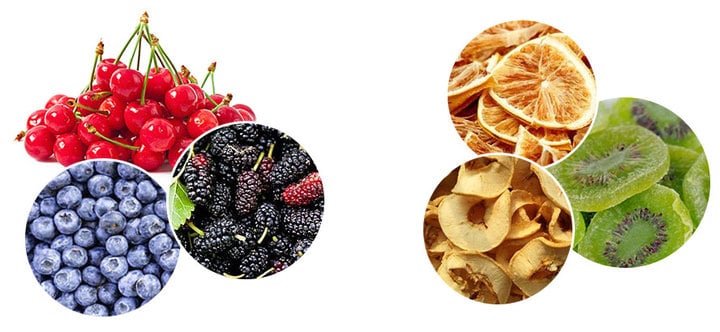
Temperature and humidity: There are also suitable drying temperatures and humidity for different fruits. For some materials with high moisture content, the combination of high-temperature drying and natural drying with low-temperature drying is adopted. Appropriately increasing the temperature difference can increase the drying rate. Most materials need to reasonably control the drying curve and dehumidification curve in different drying stages to ensure the quality of the finished product.
在网站的解决方案页面上,我们列出了水果干燥的一些常见干燥工艺,包括需要设置的温度和湿度、干燥时间、干燥方法等。如果您有物料需要干燥,欢迎联系我们专业的干燥专家,以获得最合适的温度和湿度设置。
The choice of heat source: On the one hand, the heat source is closely related to the cost of the customer, on the other hand, it will also affect the drying effect of the material to a certain extent. For families and small fruit shops, air energy heat pumps are the most suitable way. For large-scale fruit processing plants, coal, oil, gas and other methods can also be used. These methods can generate greater heating value, meet the demand for high production, and have greater economic benefits. Regarding how to choose a heat source, you can refer to our article for reference.


